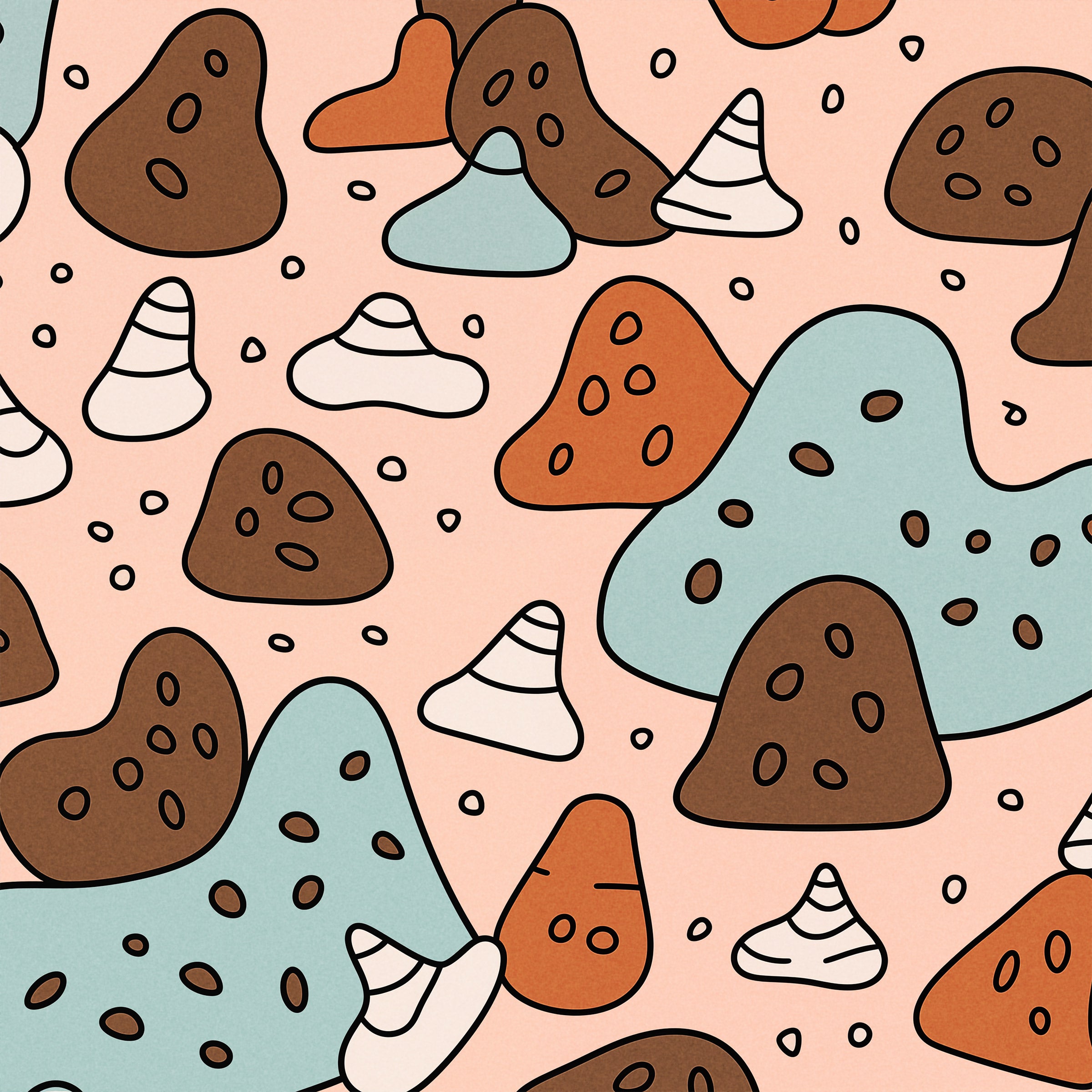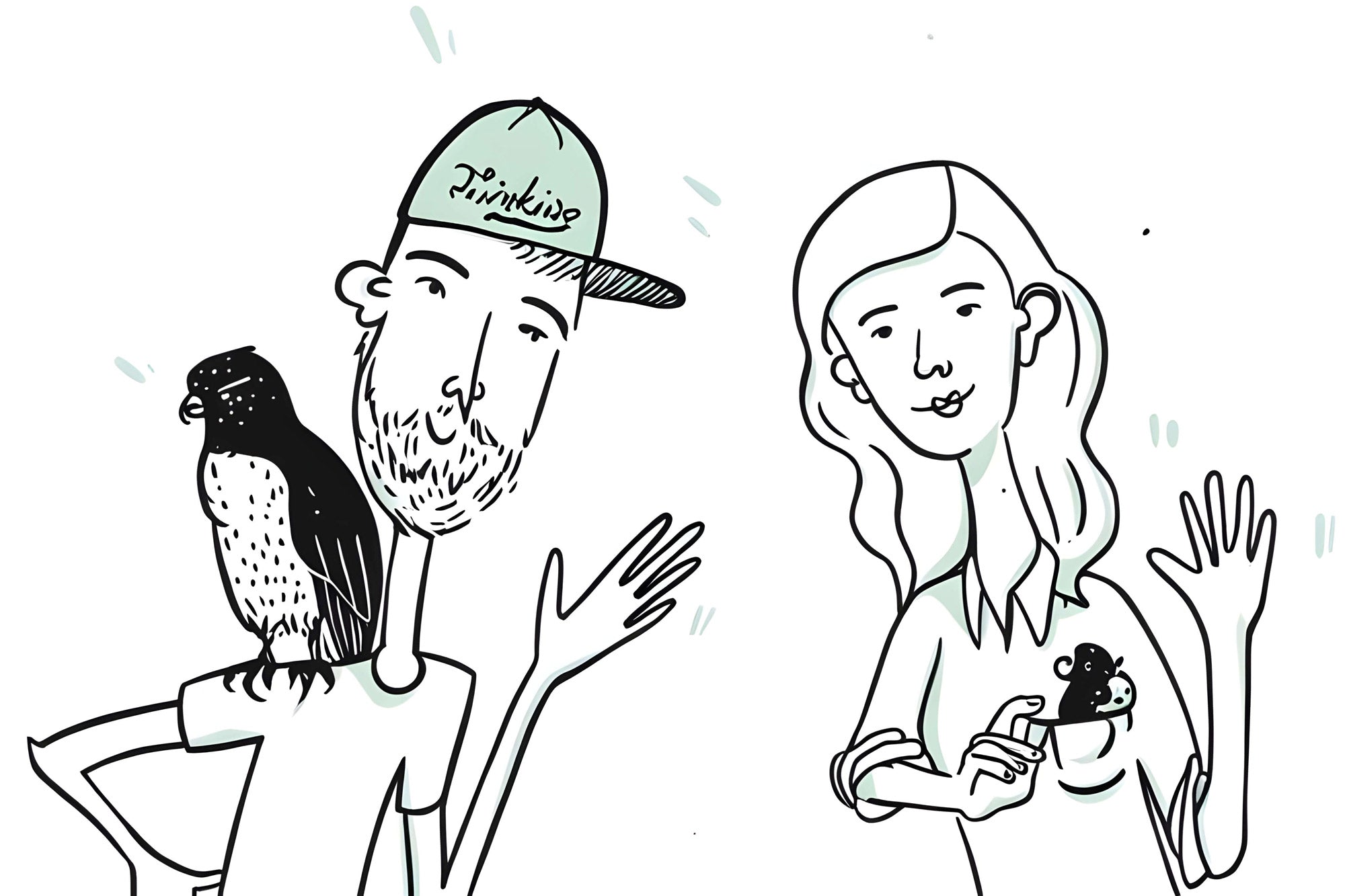
Fun Facts About Poop
Today we’re going to literally get into the bowels of history and science and talk about poop 💩. You know poop - fecal matter, doo-doo, #2, scat, etc. We all do it, so don’t shy away now, I’m about to drop some outrageous facts about the stuff. So much that you might have to flush twice. Before we get to the facts, lets touch on some high-level biological basics.
What is poop?
Keeping it professional here. The term "poop" is a very commonly used slang word that means feces and is more acceptable than other similar terms such as "the 4-letter ones". It is also used as a verb to mean defecation or the act of going number two. The word "poop" is somewhat childish and informal when referring to feces... but that's how we roll.
Why do we poop?
The purpose of poop is multifaceted. It serves to eliminate waste and toxins from the body after the absorption of nutrients. Additionally, poop acts as a fertilizer for some organisms and a source of food for others, playing a vital role in the ecosystem. Furthermore, the characteristics of poop can provide valuable insights into an individual's health, as it can indicate the presence of illness or imbalances in the body.
OK, now back to the fun. We culled these fun facts from a variety of medical papers, gastroenterology sites and other dense areas. Beyond finding many turds of interest, I can also say confidently that many in this field have a refreshing sense of humor. Kudos. Now get comfortable, on a chair or bathroom throne, and let’s get to the facts!
FUN FACTS ABOUT POOP
1. The average person produces about 0.25 to 1 pound of poop per day.
You should keep in mind that every body is different, and everyone's “poundage” is also different. A healthy deposit from Bubba might be very different from the healthy droppings of Jenny.
2. Poop is made up of mostly water, but it also contains undigested food, dead cells and bacteria. So much bacteria.
In fact, if you exclude the water content, about 50-80 percent of your poop is bacteria that’s been living lushly in your intestines.
3. The color of your poop can change depending on what you eat.
For example, eating beets can make your poop turn red. Eating leafy greens can add a green tinge. Most dramatically, eating lots of artificially dyed food can turn your toilet bowl into a rainbow. Ever had a brightly frosted cake at a kids birthday party? You might notice some primary colors showing up during your next BM.
4. Poop can have different smells depending on the type of bacteria that's present.
BM’s will almost never smell nice (this is an evolutionary trait we’ve got), but the aroma can vary based on things you eat and your health condition. For example, eating lots of eggs, cabbage, broccoli and cauliflower can enhance the sulfur smell (also known as the ‘rotten egg’ smell). Beyond that, medical conditions like IBD, IBS, celiac disease or infection will also play a part in the final scent profile of your loaf.
5. Poop can sometimes float because it contains gas from bacteria breaking down food in the intestines.
The presence of excess gas in the gastrointestinal (GI) tract can cause stool to float. This gas is produced during the process of bacterial fermentation in the gut. The exact buoyancy of your stool depends on the composition of bacteria in your gut and other individual factors.
6. The longest poop ever recorded was 26 feet long (sort of)!
This is a totally misleading fact BTW! Yes there was once a 26-foot stool. No it was not made “all at once”. This story comes from an artist named Michelle Hines in 1995 who had an art installation in Brooklyn. In this art show that focused on hoaxes, a 26-foot-long poop was crafted and displayed. Since it wasn’t made by human bowels, it is not an official world record. Just a disgustingly fascinating anomaly.
Worth noting, the human colon is approximately 5 feet in length, so logic would dictate that is the max length of a true-blue, human-made poop cable.
7. The color of your poop can be an indication of your health.
Back to talking about poop colors, some colors can be warning signs of potentially bad health conditions. For example, green poop can be a sign of infection.
Most gastroenterologists agree that most brown shades are considered ‘normal’. However, other concerning colors might be light yellow, black or bright red poops. These often indicate something bad and you should seek a doc if this is you.
8. Some animals partake in coprophagy. This is where they eat their own poop.
But WHY? Well let's get into it. The behavior known as coprophagy isn’t wildly uncommon in the animal world. This practice will be done by some animals to obtain more nutrients from their already-digested food. Often when food is scarce or during cold months. Rabbits for example LOVE to feast on their little turd pellets (unless they can get real food, ha).
9. Some animals prefer poop to mark their territory.
It definitely makes a statement! Using poop to mark territory is relatively common in the animal world and is a practice done by Macaques, meerkats, hyenas, lemurs, water voles, badgers, foxes and more. Foxes in particular seem apt at placing these markers in highly-visible, highly-trafficked areas - like on pedestrian bridges, trail crossings or other nature spots that see plenty of 2-legged hominids.
10. Poop is a valuable fertilizer because it contains nutrients like nitrogen and phosphorus.
We’re probably not blowing minds with this one, but it is worth noting that using poop to fertilize cdrops is one of the oldest (and still best) methods for organic gardening. Some stats say that the discovery of fecal fertilizers helped cement the rise of civilizations and allowed for the population growth we see now.
While the most common types used in America are likely manure and guano, human poop has also been used successfully for hundreds of years. Warning: don’t try this at home without doing your research. There needs to be some treatment and processing in order to avoid potential disease-causing pathogens.
11. The word "poop" comes from a hodge-podge of cultural origins.
The word "poop" comes from various origins. It was first written down over 600 years ago, in reference to the rear deck of a ship. The term "poop" in this nautical sense is derived from the Old French "poupe" and the Latin "puppis," both meaning "stern of a ship." However, the word "poop" also has other meanings and origins. In Middle English, the verb "poupen" meant to make an abrupt sound, or to blow or toot a horn. The opportunity for onomatopoeia was apparently not missed by history, and 'poop' started seeing use to describe a fart. By 1744, "poop" progressed past passing gas and finally found its calling as a term for feces.
BONUS: Fart comes from the Middle English word “ferten” as noted in a 1530 Middle English Compendium. It also noted the term “fizzle” which means “to break wind without noise”.
12. There are 7 recognized types of human poop.
Sometimes you just need more than one, you know? The big brains in the medical world say there are 7 distinct types of poop. They are as follows:
- Type 1: Separate hard lumps that are hard to pass
- Type 2: Sausage-shaped but lumpy
- Type 3: Like a sausage but with cracks on the surface
- Type 4: Like a sausage or snake, smooth and soft
- Type 5: Soft blobs with clear-cut edges that are easy to pass
- Type 6: Fluffy pieces with ragged edges (mushy)
- Type 7: Watery, no solid pieces, entirely liquid
The sweet spot is around 3-4. 1-2 and you’re likely constipated. 5-7 and you’re closer to the big D (diarrhea).
13. Some animals, like elephants, use their poop as a form of sunscreen.
Elephants have been observed using mud and dust, including dried feces, as a form of sun protection. They will often coat themselves in these substances, which can help protect their skin from the sun's harmful rays. This behavior is particularly important for elephants, as they are susceptible to sunburn due to their sensitive skin. The sun can be a hot monster, so who are we to judge? Elephants, using what they got!
14. Some cultures use poop as a cooking fuel.
In Kenya, human poops can be transformed into clean briquettes that serve as an alternative to traditional cooking fuels like kerosene or charcoal. These briquettes burn longer, emit less smoke, and help combat excessive logging by providing a sustainable fuel source.
Additionally, the use of poop as a cooking fuel has been demonstrated at markets to showcase its effectiveness and as an alternative to traditional fuels.
15. If you’re obsessed with poop, it’s called "coprophilia."
I can’t say I’m blessed with (suffer from?) coprophilia after writing this post. But I confess that there is some repulsive fascination when doing the research. For those that are REALLY enjoying these sninky facts, maybe you’ve got a minor case;-). Or maybe we just enjoy coprology (the study of poop).
16. Some people believe that eating poop can be beneficial for your health, a practice known as "coprophagia." However, this is not recommended and can be very dangerous.
There is ongoing research into the potential health benefits of fecal microbiota transplantation (FMT) for treating certain medical conditions, particularly colonic bacterial infections. FMT involves the transfer of fecal matter from a healthy donor to a recipient to restore the balance of bacteria in the gut. This procedure has shown promising results in some cases. However, it is important to note that FMT is a medical procedure performed under strict medical supervision and is not the same as chowing down on one's own or another person's feces. Eating feces can be very dangerous and is not recommended, as it can lead to the transmission of diseases and parasites.
That said, FMT is commonly performed as a colonoscopy or enema, however, oral ingestion (chowing down) has been used as a delivery method and researchers are studying the efficacy of oral capsules. I hope they call them dingleberries.
17. The average bowel movement (BM) takes roughly 12 seconds.
Certainly an important study, in 2017 a paper titled ‘Hydrodynamics of Defecation’ dropped from the Georgia Institute of Technology and University of Alabama. They studied a variety of mammals like cats and elephants and came to their 12 second conclusion.
But why are big animals like Rhinos and Elephants so similar to little ones like rabbits and cats? While they are bigger, they also have bigger intestines, with more mucus (you know, to lubricate the evacuation) and the result is surprisingly consistent results in poop time across many mammal species.
18. It takes 2-5 days to turn food into poop.
The norm is a 6-8 hour wait for food to be absorbed into the small intestine from the stomach. From there, there’s around a 36 hour wait for the food to move through colon (thanks Mayo Clinic!), so all told, that’s where we get our 2-5 day benchmark.
19. Fecal Transplants are a thing, and they can be very helpful!
A fecal transplant is the process of taking healthy poop from one person, and putting it into someone else with a not-so-healthy gut (or poor immune system). The goal is to jumpstart that unhealthy person’s good bacteria and thus immune system. In a 2019 study, researches found that the fecal transplant method was more effective at treating folks with bloodstream infections than antibiotics.
20. Donate (your poop) today!
Yes, you can donate poop. This is due to its potential for assisting with various treatments and study. A program developed in Boston epicly named: Poop with Purpose allows you to signup to be a poop donor. The program is run by Finch Therapeutics Group which is a biotech co. that focuses on conditions related to the disruption of the microbiome. BTW - they are only looking for healthy donors folks.
21. Squatting really does make pooping easier.
You may have seen the videos, Shark Tank eps or other media about the ‘squatty potty’ and other devices that encourage you to pop a squat when pooping. These are actually pretty spot on, backed by a 2019 study in the Journal of Clinical Gastroenterology, that found that different posture modifications positively affect poop duration, and reduce constipation feelings.
Posture modification device is a fancy word for poop stool (or toilet stool or *insert poop joke*). It works by helping you get your knees elevated while sitting on a toilet to achieve the ‘squat’ position. Something that backpackers and back country campers are probably nodding their heads about.





